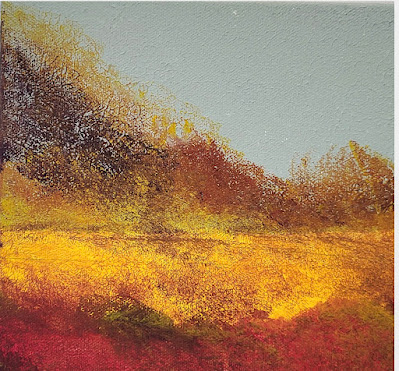Margaret
Chambers - District
of Columbia State Organization - Beta Chapter
Master
educator, artist and motivator, Margaret Chambers, allows us a glimpse into her
journey combining her passion for education with her creative vision. “Keep Art
in Your Heart” is the saying for the DCSO artists!
Tell us about yourself as
an educator and an artist.
As a high school English
teacher in Ohio, I introduced an interdisciplinary lesson to captivate student
interest. My paintings and sculptures were writing inspirations. Fast forward as an itinerant elementary art educator in Washington D.C. I
redesigned my art curriculum. My in-depth knowledge and research gleaned from my
Masters in Education degree propelled me to devise an interdisciplinary art
curriculum guide, entitled: “Art Education: A Vehicle for Learning.” The Art Around the Corner program with the
National Gallery of Art (NGA) was an interdisciplinary community partnership in
D.C. It’s one of the most enriching experiences in my career. Students and I
traveled to London and Paris incorporating interdisciplinary learning at the Louvre
and Buckingham Palace. Their attire read SWART an acronym: Special, Working
Artists Readiness Team. SWART was highlighted in the New York Times,
Washington Post and on several local television stations. My rewarding career
includes presentations in States for D.C. Schools and NGA. My most notable
awards include D.C. Superintendents monetary Outstanding Teacher Award, Scottish
Rite Education Award, National Art Educators Award, NGA award, Kennedy Center
ART WALL recognition (written by former students) and Whos’ Who Teachers Honor.
My art includes acrylic and oil painting in abstract and realistic style. Using
heated organic shaped plexiglass, I create sculptures and tables. My Artventure
Biophilic Design brings nature into interiors promoting an aura of peaceful
existence. It comprises time in a natural environment affecting our
productivity, lowers stress, enhances learning, etc.
Tell us what inspired you
and how you developed the art you entered in the gallery.
Current events, nature, life experiences, international
travel, are the catalysts that have inspired my art and so much more. My
artistic development of these experiences were expressed via painting, essays, poetry,
photography, and crafts.
Tell us about your most
recent photographs: Cascading Aquascape Garden & Tranquil Newport Harbor:
Cascading Aquascape
Garden:
Outside my friend’s abode
was her oasis. We listened to the soothing sounds of trickling water as we enjoyed
the enchanting sights of nature and paradise!
Tranquil Newport Harbor: In Newport, Rhode Island I was captivated by
the picturesque view illuminating Newport Harbor. The quaint and vivid vessels in
the harbor capture the peaceful moment of tranquility!
What is the best artist
advice you have been given?
Visiting David Driskel at
his Maine studio, his advice was to “evolve in my own original perspective of creativity. Gain
critical knowledge of art and continue to evolve.”
What does the value of Creative
Arts in Education mean to you?
Activities that engage
students in organic movement such as dance, allow them to feel free in a
natural way. This demonstrates a specific creative art component that spans
cognitive, language social, emotional, and physical parameters. This benefits
the development of children and adults, imagination through the arts. Music movement, song, drama, and storytelling
activities encourage students to learn and support critical thinking skills
independently for themselves. Using art in a pleasurable manner results in
supporting children’s development without pressure! An important value for
children with disabilities is it has creative engagement to improve motor
skills. Open-ended opportunities such as
coloring, painting and clay help children enhance their vocabulary and more. In
conclusion Creative Arts benefits students’ social and emotional capability,
dual language communication and cognitive developmental skills which in turn, affects
the quality of children’s lives.
Tell us about your role
as the arts liaison for DCSO.
As Arts liaison I connected directly with the
DKG International Arts chair, disseminating information for art entries via DCSO
Chapter representatives.
What activities do the
DCSO artists do to keep motivated?
The DCSO ladies engage in
varied activities, such as recognition certificates, art exhibitions, news
articles and spotlighting exceptional art entries.
Do you have any advice for
other states who would like to start a committee?
Develop a master plan and
organize this plan according to the needs, and interest of your chapter
membership. Next develop a committee with the idea of shared responsibility for
the members. Secure the support from the state president as well as the chapter
presidents.
Just one more thing....do
you have anything else you want to add?
Continue Humanities and
Arts (universal language of communication) as a vehicle to expand Membership!!












.jpeg)